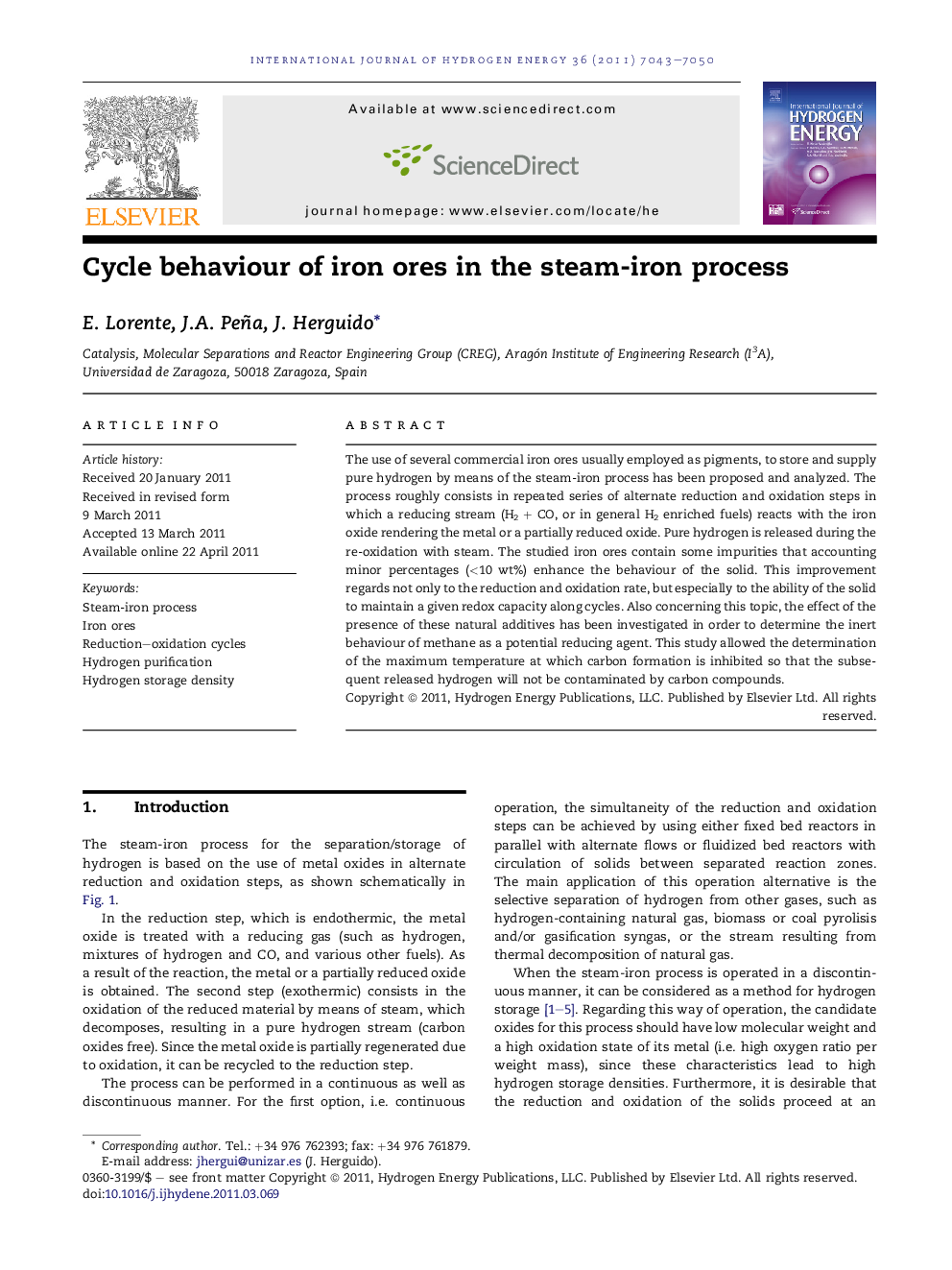| Article ID | Journal | Published Year | Pages | File Type |
|---|---|---|---|---|
| 1272092 | International Journal of Hydrogen Energy | 2011 | 8 Pages |
The use of several commercial iron ores usually employed as pigments, to store and supply pure hydrogen by means of the steam-iron process has been proposed and analyzed. The process roughly consists in repeated series of alternate reduction and oxidation steps in which a reducing stream (H2 + CO, or in general H2 enriched fuels) reacts with the iron oxide rendering the metal or a partially reduced oxide. Pure hydrogen is released during the re-oxidation with steam. The studied iron ores contain some impurities that accounting minor percentages (<10 wt%) enhance the behaviour of the solid. This improvement regards not only to the reduction and oxidation rate, but especially to the ability of the solid to maintain a given redox capacity along cycles. Also concerning this topic, the effect of the presence of these natural additives has been investigated in order to determine the inert behaviour of methane as a potential reducing agent. This study allowed the determination of the maximum temperature at which carbon formation is inhibited so that the subsequent released hydrogen will not be contaminated by carbon compounds.
► Natural iron ores are a suitable alternative to carry out the steam-iron process. ► The studied iron ores showed better stability as compared with the pure iron oxide. ► Micronox ore showed highest values of final hydrogen storage density. ► CaO and MgO content can explain the stabilization tendencies observed.
